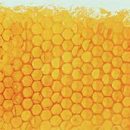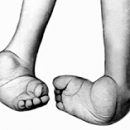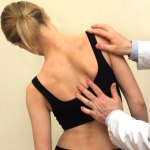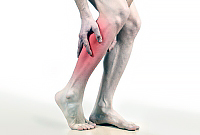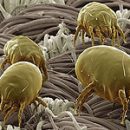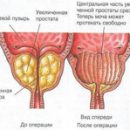Osteochondrosis of the cervical spine. Stages of development of the disease, the main symptoms and treatment. Medical tactics of the neuropathologist and orthopedic.
Content
- Stages of osteochondrosis of the cervical
- Symptoms of osteochondrosis of the cervical
- Treatment of osteochondrosis of the cervical spine
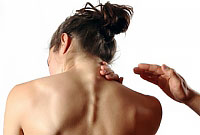 Osteochondrosis is the most common form of degenerative lesions of the spinal column. It is believed that in the development of the disease they play the role of hereditary factors, age, metabolic disorders.
Osteochondrosis is the most common form of degenerative lesions of the spinal column. It is believed that in the development of the disease they play the role of hereditary factors, age, metabolic disorders.
Osteochondrosis of the cervical spine is in frequency in second place after lumbar. The peculiarity of the defeat of this part of the spinal column is that, in addition to neurological symptoms, there are also signs of the violation of the blood supply to the brain.
Stages of osteochondrosis of the cervical
In the development of the osteochondrosis of the cervical area, a clear statifiability is observed:
- In the first stage, at which there are no no symptoms, the liquid disk kernel acquires some mobility;
- In the second stage, the pathological mobility itself occurs due to the violation of the fixing function of the intervertebral disc;
- In the third stage, there is a breaking of a block apparatus of a disc with the output of its liquid nucleus outward (the protrusion occurs, and afterwards the hernia of the disk);
- In the fourth stage, the process is disseminated to the surrounding authorities: bones, bundles, spinal channel and T.D.
Symptoms of osteochondrosis of the cervical
The brightest symptom of the osteochondrosis of the cervical. It is localized in the field of spine, right either to the left of it. There is a typical irradiation of pain along the affected nervous root:
- in the head;
- to the back surface of the neck;
- in shoulders and upper edge of the blades;
- In the outer surface of the hand up to the brush.
The pain is usually clearly localized, its strength depends on a certain position or movements head. At the same time, there is an increased fatigue of the muscles of the upper limb, especially when working with the hands raised up.
 Frequent satellite lesions of the cervical — headaches. Often they occur when the head turns or long stay in a fixed position. The cause of them — squeezing the vertebral artery of the hernia of the intervertebral disk, bone exploration or echoing with the mosite.
Frequent satellite lesions of the cervical — headaches. Often they occur when the head turns or long stay in a fixed position. The cause of them — squeezing the vertebral artery of the hernia of the intervertebral disk, bone exploration or echoing with the mosite.
For the same reason, the so-called drop attacks may occur. Due to squeezing the vertebral artery with a sharp turn of the head, short-term attacks of a sluggish paralysis arise. Unlike stroke, consciousness remains.
Third symptom — Skin disorders. There is a clear connection with the affected nervous root: pathological sensations or numbness are detected precisely in the zone of its innervation.
When protruding hernia inside the spine canal, signs of squeezing spinal cord may occur. At the same time, impairment of muscle motor functions are noted both upper and lower extremities.
Treatment of osteochondrosis of the cervical spine
The treatment of cervical osteochondrosis is aimed at eliminating pain syndrome. Restoration of the blood supply of the brain and slowing the progression of the disease. Initially, the patient treats a neuropathologist who appoints conservative treatment:
- Non-steroidal anti-inflammatory drugs are used locally and systemically. Paracetamol, diclofenac, ibuprofen in the form of ointments, gels, in tablets and injections are not well coped with pain in osteochondrosis.
- The pronounced intensity of pain inevitably affects the neuropsychic state of the patient. Tranquilizers may be appointed in the acute period. With a long existing pain (more than 4 weeks), they are replaced with antidepressants. These drugs allow to normalize the patient's psyche.
- In the acute period, miorylaxants can be used to reduce squeezing the nervous root.
- Sometimes a neuropathologist prescribes the imposition of plates with lidocaine to the affected area. The drug is absorbed into the tissue and produces anesthetic effect.
- To maintain the power of the brain, vasodilators (Ehufillin, Cavinton) are prescribed, as well as funds that improve the metabolism of the nervous tissue (cinnarizine, nootropyl).
With the ineffectiveness of conservative treatment for several months and the progression of the disease sometimes have to resort to surgical operation. A mass of techniques have been developed to improve the situation:
- excision of hernia;
- removing the liquid core of the disk through the puncture;
- Spondylodez — Full splicing of two adjacent vertebrae with the removal of the intervertebral disk.
Osteochondrosis is considered a chronic disease with continuous progression. Once upon a time, he remains forever. It is quite difficult to treat it, not always attempts are crowned with success. Only an active lifestyle and exclusion of static loads on the spine will prevent the development of this unpleasant disease.

